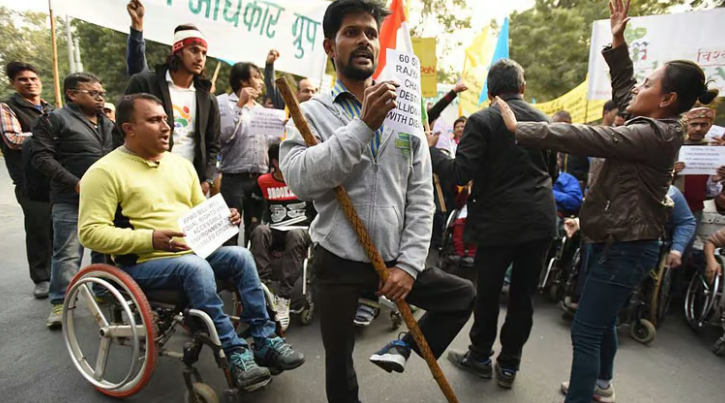Disabling the Disabled (GS Paper 3, Economy)

Context
- The Indian Goods and Services Tax (GST) regime imposes a five percent tax on essential mobility aids such as prosthetic limbs, Braillers, and wheelchairs.
- Enacted in 2017, this tax unfairly penalizes disabled individuals, contradicting constitutional principles and established judicial precedents against discriminatory taxation.
- This article argues for the repeal of this tax to ensure dignity and equality for disabled citizens.
Discriminatory Tax Regime
- Revenue policymakers in India have created a tax regime that not only discriminates against disabled individuals but also effectively penalizes them for their disabilities.
- This is particularly surprising given Prime Minister Narendra Modi’s expressed concern for the disabled, whom he refers to as “divyang,” meaning divine in Hindi.
- A tax regime that penalizes movement and learning—activities for which able-bodied individuals do not pay any tax—fails the test of reasonableness under Article 14 of the Constitution.
- The unfairness of this taxation is evident, even without complex legal principles.
The Burden on Wheelchair Users
- Consider the case of a wheelchair user who pays five percent GST on a motorized wheelchair costing Rs 1 lakh.
- If the wheelchair's lifespan is 500 kilometers, the tax burden can be calculated as Rs 10 per kilometer.
- An able-bodied person would scoff at the notion of paying the government a tax for every kilometer they walk.
- Similarly, a blind person bears the tax burden of a Braille publisher solely due to their blindness.
- Such a tax on goods used by people with disabilities for movement and learning amounts to explicit and severe discrimination.
Constitutional Challenges and Judicial Precedents
- The Supreme Court of India has tested the constitutionality of various taxes in landmark cases such as Sakal Papers (1961), Indian Express (1984), and Aashirwad Films (2007).
- The judiciary has consistently struck down any tax, cess, or duty that indirectly curtailed a fundamental right. For instance:
- In Sakal Papers, the Supreme Court struck down government-imposed restrictions on advertising in newspapers, as reduced advertising would lower circulation, impacting the citizen’s fundamental right to free speech and expression under Article 19(1)(a).
- In Indian Express, the Supreme Court struck down the customs duty on newsprint, terming it a burden on the common man for being literate and informed.
- In Aashirwad Films, the Court struck down a discriminatory tax on non-Telugu movies in Andhra Pradesh, terming it “socially divisive.”
The Way Forward
- The tax imposed on disability aids perpetuates negative stereotypes against those who are disabled by penalizing their disability, unlike their able-bodied counterparts.
- Such a tax regime should not remain in effect in 2024.
- Even under Article 15, which prohibits discrimination on grounds of “place of birth,” this tax fails.
- The phrase “place of birth” must be interpreted to include individuals with disabilities, thus warranting the tax's repeal.
- The Rights of Persons with Disabilities Act, 2016, specifically prohibits discrimination against persons with disabilities under Section 3.
- Chief Justice DY Chandrachud, in a landmark 2021 judgment on Article 15 (Lt. Col. Nitisha), emphasized the need to recognize indirect discrimination.
Rights of Persons with Disabilities Act, 2016
- The Act was passed to give effect to the United Nations Convention on the Rights of Persons with Disabilities (UNCRPD), which India ratified in 2007.
- It replaces the earlier Persons with Disabilities (Equal Opportunities, Protection of Rights and Full Participation) Act, 1995, which was inadequate in addressing the needs and challenges of persons with disabilities in India.
- The Act expands the definition and classification of disabilities, recognizing 21 types of disabilities compared to 7 under the previous law.
- It empowers the central government to notify any other category of specified disability and defines persons with disabilities as those with long-term impairments that hinder their full participation in society equally with others.
- Repealing discriminatory taxes and implementing supportive measures for the disabled will contribute to a more inclusive and equitable society.
Conclusion
- Although the GST revenue collected from disability aids is minuscule compared to the total, the issue is one of dignity for the disabled.
- By taxing them for basic activities such as movement and reading, society sends a message not of empowerment but of inferiority.
- Repealing this discriminatory tax would be a significant step toward ensuring equality and dignity for all citizens, regardless of their physical abilities.


